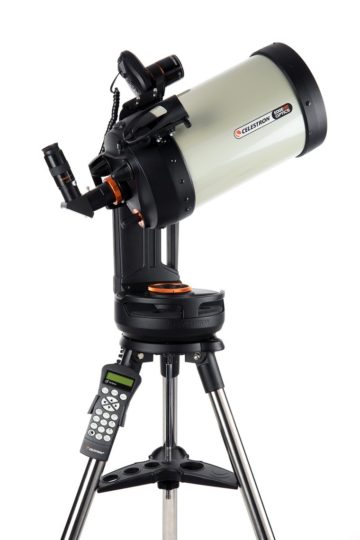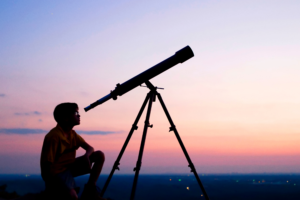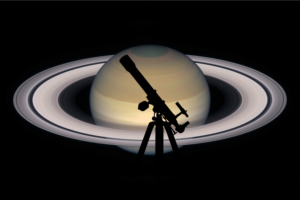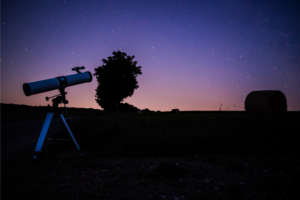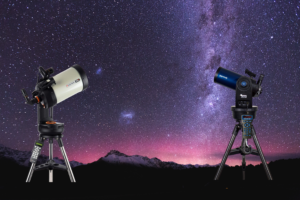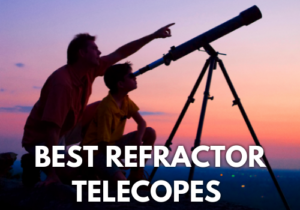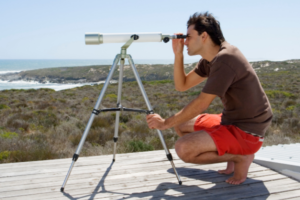Best Telescope Under $2000 (2025); Reviews
Disclosure: This post contains affiliate links and I may earn a small commission (at no extra cost to you) if you click through and make a purchase. Thanks in advance – I really appreciate it!
Here in this “Best Telescope Under $2000” article we’ve rounded up 6 of the best telescopes of various types, specifications perfectly suited to be used by someone looking to level up. Below, you’ll find in-depth reviews of each, as well as an elaborate buying guide to help you pick out the one that suits you the most.
COMPARISON TABLE
| Image | Title | Best For | Features | Price | Buy |
|---|---|---|---|---|---|
Top Top
Top
Top
Top
Top Top
Top
Top
Top
Top | Celestron - NexStar 8SE | Best Computerized | Type: Schmidt Cassegrain, Aperture: 203 mm (8″), Focal length: 2032mm, Focal Ratio: f/10 | See on Amazon | |
 Top
Top
Top
Top
Top
Top
Top
Top | SkyWatcher S11800 GoTo Collapsible Dobsonian 8-Inch | Best Dobsonian | Type: Newtonian Reflector, Aperture: 203mm (8″), Focal length: 1200mm, Focal Ratio: f/5.9 | See on Amazon | |
 Top
Top
Top
Top
Top
Top
Top
Top | Sky-Watcher EvoStar 100 APO Doublet Refractor | Best For Astrophotography | Type: Apochromatic Refractor, Aperture: 100 mm(3.9″), Focal length: 900mm, Focal Ratio: f/9 | See on Amazon | |
 | Celestron - Advanced VX 8” EdgeHD Computerized Telescope - GoTo German Equatorial Mount - 8-Inch EdgeHD Optical Tube - Telescope for Astroimaging - 30 lb Payload Capacity | editable | editable | See on Amazon | |
 Top
Top
Top
Top
Top
Top
Top
Top | Celestron - NexStar Evolution | Best Schmidt Cassegrain | Type: Schmidt-Cassegrain, Aperture: 203.2mm (8″), Focal length: 2032mm, Focal Ratio: f/10 | See on Amazon | |
 Top
Top
Top
Top
Top
Top
Top
Top | Orion 10020 SkyQuest XT12i IntelliScope | Best For Stargazing | Type: Reflector, Aperture: 304 mm (12″), Focal length: 15000mm, Focal Ratio: f/4.9 | See on Amazon |
Product prices and availability are accurate as of the date/time indicated and are subject to change. Any price and availability information displayed on [relevant Amazon Site(s), as applicable] at the time of purchase will apply to the purchase of this product.
Prices pulled from the Amazon Product Advertising API on:When looking to buy the best telescope under 2000 dollars it is easy to get carried away with included gadgets. However, just because a telescope comes equipped with tripods, extra eyepieces, and even computerised GPS, does not make it a good telescope. The most important thing is the optics and should come before everything else.
To help, we’ve scoured thousands of reviews and compared all the best stargazing telescopes at $2000 point. Below you’ll find six great telescopes, all priced at around $2000. Each has features that make it a good option at that price, so you can compare and find the one that’s right for your stage of stargazing. Read on to learn about the six best telescopes under $2000 we’ve found.
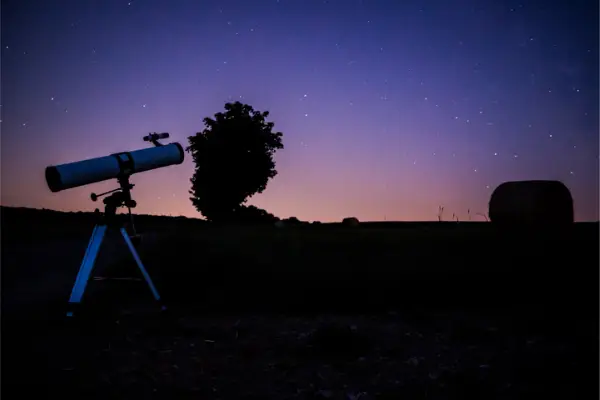
Best Telescope Under $2000
Best Computerized Telescope
Celestron – NexStar 8SE
- Type: Schmidt Cassegrain
- Aperture: 203 mm (8″)
- Focal length: 2032mm
- Focal Ratio: f/10
- Mount: GoTo Alt-Azimuth
- Eyepiece: 25mm
- Magnification: 81x
- Weight: 33 lbs.(15 kg)
- Our Rating: 9.6/10
Prices pulled from the Amazon Product Advertising API on:
Product prices and availability are accurate as of the date/time indicated and are subject to change. Any price and availability information displayed on [relevant Amazon Site(s), as applicable] at the time of purchase will apply to the purchase of this product.
The NexStar 8SE is an 8-inch Schmidt-Cassegrain with a focal length of 2,032mm, giving a focal ratio of f/10. All of this fits into a compact orange tube that is just 432mm long.
A StarPointer red-dot finder, E-Lux 25mm, 1.25-inch fit Plössl eyepiece and a star diagonal complete the optical tube assembly.
It is ideal for beginners and upgraders who want a huge aperture, easy goto set-up, a 40,000 object database and motorised tracking all for a relatively low price.
The NexStar 8SE has a long Vixen dovetail bar on the side of the optical tube, but it is largely decorative in purpose as the scope will only really balance with the dovetail slid all the way or nearly all the way forward in the saddle.
On average it takes a new telescope user approximately 5 minutes to do a full sky alignment with this telescope.
Once aligned the Celestron 8 SE computerized telescope is incredibly easy to operate. Optically the Celestron NexStar 8 SE telescope is nearly flawless with Celestron’s famous C8 Optical Tube Assembly.
The 8SE is one of the best computerized telescope under $2000 as it helps you easily view those faint deep sky objects such as nebulae, star clusters and galaxies.
This Celestron telescope yields super crisp images of the night sky and, once aligned, finds objects with complete accuracy.
It’s mount is a single-arm, altazimuth mount, all-in-one unit with the neatly integrated NexStar hand controller, which can be pulled out when in use.
The NexStar computerised hand controller has been designed to slot into the single arm and provides a database of 40,000 objects to choose from.
The NexStar 8SE has a long Vixen dovetail bar on the side of the optical tube, but it is largely decorative in purpose as the scope will only really balance with the dovetail slid all the way or nearly all the way forward in the saddle.
Its build quality is robust and it can take the general knocking around that comes with usage of a telescope.
Setting it up is quite easy too, just follow the manual. Takedown is just as quick and the whole scope packs away into rather small dimensions – certainly small enough for the average trunk.
The 8SE mount takes eight AA batteries, but we recommend only using these as backup – get a portable 12-volt DC power supply and cord or Celestron even sells some as the PowerTank meant specifically for astronomical use.
Pros:
- Excellent optics
- Easy computerized GoTo tracking
- Light, portable and affordable
- Easy setup and takedown
- Good value for money
Cons:
- Excellent optics
- Easy computerized GoTo tracking
- Light, portable and affordable
- Easy setup and takedown
- Good value for money
Best Dobsonian
SkyWatcher S11800 GoTo
- Type: Newtonian Reflector
- Aperture: 203mm (8″)
- Focal length: 1200mm
- Focal Ratio: f/5.9
- Mount: Computerized – GoTo Dobsonian
- Eyepiece: 25mm,10mm
- Weight: 57.2 lbs.(26.0 kg)
- Our Rating: 9.8/10
- Max focal length: 1200
Prices pulled from the Amazon Product Advertising API on:
Product prices and availability are accurate as of the date/time indicated and are subject to change. Any price and availability information displayed on [relevant Amazon Site(s), as applicable] at the time of purchase will apply to the purchase of this product.
The USP of the SkyWatcher S11800 GoTo Collapsible Dobsonian is that it is amazingly portable and is one of the best GoTo computerized dobsonians available in the market today.
This collapsible telescope features a patented truss tube system that enables the front corrector plate/eyepiece assembly to be moved back and locked against the main rear tube to reduce the size for storage and transportation.
Thanks to its collapsible truss tube, the scope becomes small enough to fit in most hatchbacks or on a back seat. It is truly portable, and once assembled, can be set up and ready to use in minutes.
The included SynScan computerized hand control is the brain behind the Sky-Watcher GoTo Dobsonian.
It allows you to point your telescope at a specific object, or even tour the night sky at the touch of a button!
With an internal database of more than 42,000 celestial objects, this easy-to-use hand control can locate any object you see in the night sky with push-button ease.
You can even let your Sky-Watcher GoTo Dobsonian take you on a tour of all the best objects based on your time and location.
In order to increase the light-gathering factor of this no-fuss scope’s mirror-based optical system, the two mirrors are coated with a layer of hard quartz and an additional layer of titanium dioxide.
The Sky-Watcher Dobsonian SynScan telescope has a patented dual encoder design incorporated to record the position of the telescope.
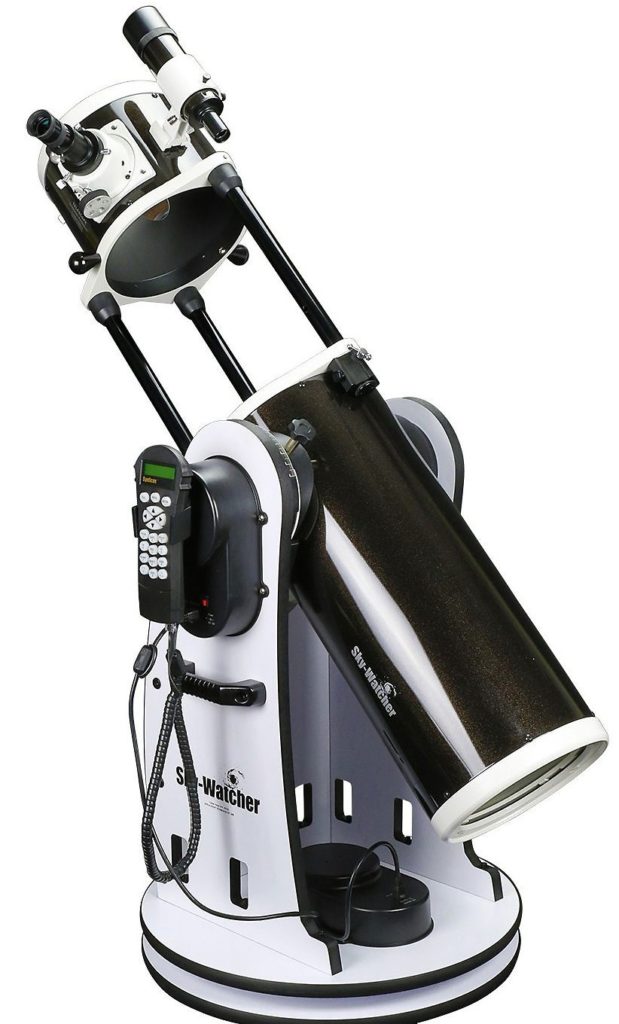
Under the Auto-Tracking Mode, you may choose to move the telescope, either manually or electronically, to any position without deactivating the tracking mode.
The AZ GoTo mode provides extensive computerized GoTo functions to assist you in finding and enjoying numerous celestial and deep space objects.
The 8-Inch Sky-Watcher Dobsonian SynScan is precision engineered telescope that will allow you to easily find and enjoy night sky treasures like Saturn, Jupiter, and other planets in the solar system, plug a huge array of deep-sky objects including galaxies, star clusters, nebulae, and more.
This Dobsonian was carefully engineered to combine ease of use, extreme portability and consistent performance in an affordable package.
No doubt, there are other truss tube designs, but the Sky-Watcher Collapsible Dobsonian does not need to be disassembled between uses.
It transports as two compact pieces that can be assembled, collimated easily and ready to use in just seconds.
Pros:
- Collapsible tube design for extreme portability
- Easy to setup and use
- Wide 8’ aperture and wide field view
- Best for dso, planets, galaxies and more
- Perfect for all-level users
Cons:
- Expensive
- No collimation tool provided
Related
Best for Astrophotography
Sky Watcher EvoStar APO
- Type: Apochromatic Refractor
- Aperture: 100 mm(3.9″)
- Focal length: 900mm
- Focal Ratio: f/9
- Mount: Vixen Style
- Eyepiece: 20mm, 5mm
- Magnification: 50x, 250x
- Weight: 8.4 lbs.(3.8 kg)
- Our Rating: 9.4/10
Prices pulled from the Amazon Product Advertising API on:
Product prices and availability are accurate as of the date/time indicated and are subject to change. Any price and availability information displayed on [relevant Amazon Site(s), as applicable] at the time of purchase will apply to the purchase of this product.
Serious Amateurs will Love the SW 100mm ED-APO Refractor Sky-Watcher high-performance ED-APO refractors offer premium optical performance for the discriminating amateur astronomer.
The Sky-Watcher Evostar 100ED uses a crown glass element, an ED glass element, and state-of-the-art optical multi coatings in its apochromatic ED doublet optics. The result is images that are essentially free of the annoying halo of unfocused violet light (chromatic aberration) that often mars the view of bright stars and solar system objects.
In addition, there is no loss in contrast such as you will find in reflector and catadioptric scopes that have a secondary or diagonal mirror hanging in the light path to scatter light..
The 100mm Sky-Watcher doublet optics are even more appealing when you consider that this Sky-Watcher apo is loaded with features other manufacturers charge extra for (or don’t even have available) – such as an 8 x 50mm right-angle finderscope, a 2″ dielectric star diagonal with 1.25″ and 2″ compression ring accessory holders, two 1.25″ LE (Long Eye Relief) eyepieces (LE20mm and LE5mm); and a foam-lined aluminum-clad carrying case.
A mounting cradle-ring clamps over OTA and allows the user to adjust the orientation and position of the scope relative to the mount to optimize viewing comfort and balance, while avoiding interference with other equipment. The scope is offered without a mount or tripod, but a Vixen-style dovetail plate makes it compatible with any alt-az or equatorial mount with a Vixen-style saddle.

The Sky-Watcher Evostar 100ED has enough premium high contrast/high resolution optical performance to let you use it as the heart of your observing system.
With a weight of 11.3 pounds, it will work well on most medium duty equatorial mounts, but may start to push the capacity of some altazimuth mounts. That said, the Sky-Watcher Evostar 100ED is still light enough to take out and set up for observing on very short notice.
Each air-to-glass surface in the Sky-Watcher PRO 100ED doublet objective lens has MHC (Metallic High-Transmission Coating) antireflection multi coatings on all air-to-glass surfaces for high light transmission, minimal light scatter, and excellent contrast.
Contrast-enhancing internal light baffles in the tube and focuser drawtube and a specially darkened tube interior provide dark sky backgrounds and high terrestrial contrast.
Considering its surprisingly low price for an apochromatic doublet, adding in the extra features you get at no extra cost, and in view of the great optical performance that comes as standard equipment, the 100mm Sky-Watcher Evostar 100ED is a terrific buy.
Pros:
- Impeccable imaging rendition capabilities
- Minimal chromatic aberrations thanks to the ED and MHC technologies
- Easy to set up
- Excellent for both celestial and terrestrial observations
- Compatible with any type of mounts
- Lightweight
- Great platform for astrophotography
Cons:
- Doesn’t have a tripod included in the pack
- Skewed towards the blue spectrum which may result in seeing pink tints on bright objects
Best for Professionals
Celestron – Advanced VX 8”
- Type: Aplanatic Schmidt
- Aperture: 203.2mm (8″)
- Focal length: 2032mm
- Focal Ratio: f/10
- Mount: Computerized – GoTo
- Eyepiece: 40mm
- Magnification: 51x
- Weight: 59 lb (26.7 kg)
- Our Rating: 9.6/10
The Celestron Advanced Series VX 8 inch EdgeHD telescope delivers amazingly flat field views of the night sky. The new Advanced VX Mount improves overall telescope performance making it a robust astro imaging platform. You will be amazed at how fast you obtain imaging results.
This package combines the groundbreaking Advanced VX mount with Celestron’s best optics, the EdgeHD optical system. This setup offers the astrophotographer maximum versatility – allowing up to 3 different f-stop configurations.
Users can attach a camera to the rear of the telescope and shoot at f/10, or attach Celestron’s optional 8″ focal reducer (sold separately, coming soon) and shoot at f/7.
Additionally, Celestron EdgeHD telescopes are Fastar/Hyperstar compatible, giving astrophotographers the option to shoot at ultra-fast f/2. No matter which configuration you choose, EdgeHD technology gives you pinpoint stars all the way to the edge of the CCD sensor.
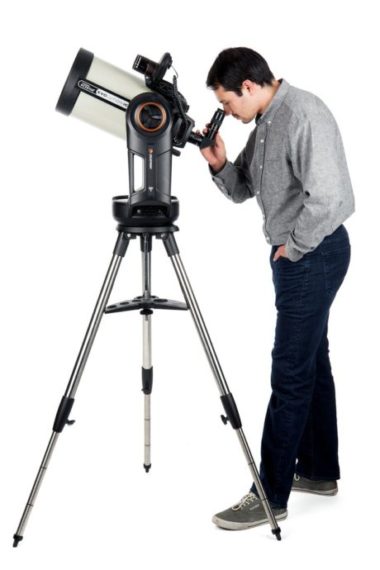
The Celestron’s optics and systems require an extraordinary amount of power, the equivalent of a car battery. Celestron, therefore, offers a bundle that includes a 12-volt power supply. A 12-volt equivalent and an adapter will be needed if you plan to substitute your own.
A 2-year warranty is included on the telescope in the case of any unfortunate accidents.
With an 8″ optical tube and Celestron’s portable and fully featured Advanced VX mount, the Celestron Advanced 8″ EdgeHD telescope setup can be easily transported and assembled by one person. You’ll also have plenty of load capacity to attach your camera and other accessories.
This setup is simple enough for a beginner to use, but can also provide years of enjoyment for sophisticated astrophotographers.
Celestron’s Advanced VX mount was specifically designed to provide optimum imaging performance for smaller telescopes. Now your smaller telescope can take advantage of All-Star Polar Alignment and autoguider support.
You’ll be able to track through long exposures using permanently programmable periodic error correction. Capture astrophotos across the meridian without doing a meridian flip, so you can seamlessly image the best part of night sky.
Advanced VX features significantly larger base castings than Celestron’s previous design, improving stability under heavier loads. Improved motors offer more torque and can handle slight load imbalances with ease.
Pros:
- Corrector optic component in the focuser tube enables a very flat field that is superior to the performance of other “Coma Free” telescopes
- The HyperStar attachment provides a wide-aperture f-2, wide-field scope while also enabling expremem narrow field (f-10), ideal for deep space photography
- The secondary mirror holds its settings perfectly even with multiple removals and replacements
- Great for general viewing, it being a Schmidtt-Cassegrain you will get images that are both inverted and reversed.
Cons:
- The rail on which the scope is mounted will only consistently work with Celestron branded mounts.
Best Schmidt-Cassegrain Telescope
Celestron NexStar Evolution
- Type: Schmidt-Cassegrain
- Aperture: 203 mm (8”)
- Focal length: 2032mm
- Focal Ratio: f/10
- Mount: GoTo: Alt-Azimuth
- Eyepiece: 40mm, 12.5 mm
- Magnification: 51x, 156x
- Weight: 40 lbs.(18.2 kg)
- Our Rating: 9.2/10
Prices pulled from the Amazon Product Advertising API on:
Product prices and availability are accurate as of the date/time indicated and are subject to change. Any price and availability information displayed on [relevant Amazon Site(s), as applicable] at the time of purchase will apply to the purchase of this product.
The Celestron NexStar Evolution 8 Computerised Cassegrain telescope is a large Schmidt Cassegrain.
It has a large 203.2mm (8″ aperture) and 2032mm focal length.
With these specifications, this telescope is capable of reaching high magnifications (480x) suitable for viewing planets and deep sky objects.
The Nexstar Evolution 8 EdgeHD Telescope from Celestron features integral Starsense auto alignment, WiFi and internal Lithium ion battery.
This high end telescope has a variety of premium features:
8” EdgeHD optics that provide a flat field with pinpoint start all the way to the edge of field, resulting in superb visual and astro-imaging performance
Rechargeable lithium-ion battery for a power source that can provide up to 10 hours of continuous observing
Built-in WiFi that connects directly to your smartphone or tablet — no handset required
StarSense auto align technology provides a hands-free automatic experience, aligning your telescope within two minutes of startup
The telescope features a NexStar evolution mount with a variety of features, including manual release clutches, precision worm gears, eyepiece tray lighting, a USB charge port and more
The NexStar Evolution 8-inch EdgeHD with StarSense is the best computerized telescope under $2000 for cloudy and light polluted nights and it also produces high quality images even when confronted with light pollution.
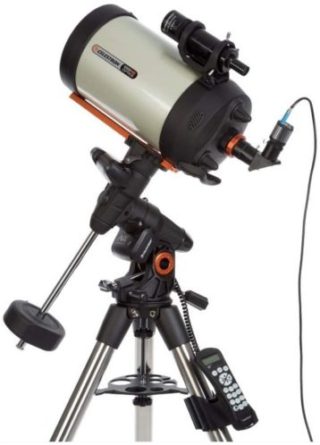
It gives you the best of two worlds with the coming together of EdgeHD optics and StarSense AutoAlign.
This innovative telescope allows you to control your telescope wirelessly via Celestron’s SkyPortal app to your smartphone or tablet.
The 8-inch NexStar Evolution HD is one of the best telescopes for astrophotography on our list.
It is the only fork-mounted telescope in its price range that offers brass worm gears, along with improved motors.
You can capture images of deep-sky objects like the Orion Nebula by simply attaching your DSLR camera.
The EdgeHD optical system is designed to virtually eliminate spherical and chromatic aberrations so views through it are flat and distortion-free across the entire field of view, with accurate color rendition.
Using Celestron’s proprietary StarBright XLT multi-coating system, light transmission is increased throughout the entire optical path with anti-reflection multi-coated lenses, highly reflective multi-coated mirrors, and four-element rare-earth glass.
Pros:
- Easy to set up, use and super accurate
- For its size the scope and mount are light and portable
- Easy alignment process with clear instruction manual
- Produces amazing images even in cloudy nights and light pollution
Cons:
- On rare occasion the telescope loses wireless connection with your device
Best For Stargazing
Orion SkyQuest XT10i
- Type: Reflector
- Focal length: 15000mm
- Focal Ratio: f/4.9
- Eyepiece: 25mm, 10mm
- Magnification: 48x, 120x
- Weight: 83 lbs. (37.6 kg)
- Our Rating: 9.6/10
Prices pulled from the Amazon Product Advertising API on:
Product prices and availability are accurate as of the date/time indicated and are subject to change. Any price and availability information displayed on [relevant Amazon Site(s), as applicable] at the time of purchase will apply to the purchase of this product.
The Orion 1019 SkyQuest XT12i is a computerized Dobsonian reflector telescope that can detect more than 14,000 objects with its parabolic optics and IntelliScope Object Locator.
If you are in the market for one of the best dobsonian telescopes under $2000 with a 10” aperture and a built-in computer then the SkyQuest XT12i would be an amazing deal for you as compared to other brands.
This non-motorized telescope can be helpful for teaching beginners to locate stars on their own.
The telescope can gather a large amount of light which enables for bright views of outer spaces, nebulas, galaxies, stars, our moon and surrounding planets.
It comes with a 2 inch Crayford focusers, two 1.25 inch Sirius Plossl telescope eyepieces (25mm and 10mm), a 9×50 right-angle correct-image finder scope, eyepiece rack, a collimation cap, and Starry Night software.
The Starry Night software is an amazing piece of software for those who are serious about astronomy or deeply enjoy it as a hobby.
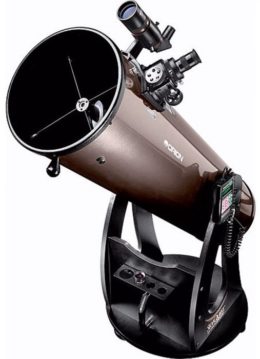
With this software, you will be able to view the wonders of the universe right from your computer. It even has a Spaceship mode which allows you to travel the universe with the click of a button.
The Orion 1020 SkyQuest XT12i comes with a wooden Dobsonian base which provides maximum support and stability.
With this software, you will be able to view the wonders of the universe right from your computer. It even has a Spaceship mode which allows you to travel the universe with the click of a button.
The Orion 1020 SkyQuest XT12i comes with a wooden Dobsonian base which provides maximum support and stability.
The CorrecTension adjustment knobs will keep the telescope’s optical tube balanced for comfortable viewing positions.
You are at an advantage using “Push-to” as compared to GoTo. Using the “push-to” XT12i IntelliScope helps you learn the night sky more quickly than motorized GoTo systems, since you are actively involved in slewing the telescope to the correct viewing position.
Additionally, the “push-to” SkyQuest XT12i IntelliScope Dobsonian runs on a single 9V battery cell for hours, which is a lot less power than more costly motorized GoTo systems require.
Pros:
- Quick and easy to assemble.
- The telescope is very portable for its size.
- This scope is reasonably priced for its quality
Cons:
- The mirror at the bottom of the open tube often collects dust and is easily scratched.
Best Telescope Under $2000 - Buying Guide
Astronomy is one of the most enthralling activities in the world. Just ask an astronomer and watch as he attempts to explain the beauty of stargazing, albeit futilely because the experience of astronomy is just indescribable unless you personally experience it.
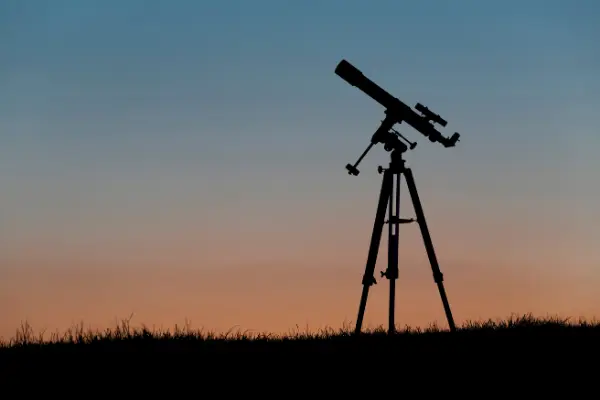
Whether you want to observe the planets and the stars, or delve deeper and explore deep space objects like nebulae, galaxies, comets and asteroids, then you are going to want to get the best scope that you can for your budget.
There are a lot of things to look out for, particularly telescope specs, functionality and features.
Features To Consider When Choosing A Good Telescope
Aperture
Aperture is the diameter, usually measured in millimeters, of the objective (primary) lens or mirror of the telescope. Essentially, the larger the aperture, the brighter images will appear, and the deeper into space you will be able to see.
Focal Ratio
Focal Ratio is a term that will be familiar to photographers, but it is important to certain astronomers, as well. This term is defined as the ratio between the focal length of the scope and the aperture.
A 100mm aperture 1500mm focal length telescope will have a focal ratio of f/15.
Focal Length
Focal length is the measurement, again in millimeters, from the objective to the eyepiece. This length directly affects the magnification potential of the telescope when paired with an eyepiece. The distance can be a literal linear measurement from the primary lens to the eyepiece, as with a refractor; or a theoretical distance based on how the light is bounced from primary to secondary mirrors and then into the eyepieces.
Magnification
Magnification is the number of times in size an object appears, compared to viewing it with the naked eye. A magnification of 32x means what you are looking at will look thirty-two times larger than when viewed unmagnified.
The magnification is calculated by dividing the eyepiece focal length into the telescope focal length. So, a telescope that has a 1500mm focal length, using a 25mm eyepiece will produce a magnification of 60x, and a 10mm eyepiece produces 150x.
As you can see, the longer the telescope focal length and the shorter the eyepiece focal length, the higher the magnification achieved.
Types Of Mounts
The mount is a very important part of the telescope. Some types of telescopes are better suited for a particular type of mount. There are 4 main types.
Alt-Azimuth Mounts:
Alt-azimuth mounts are the simplest type of mount, and they are similar to a camera tripod. They allow you to move the telescope up and down and side to side. But it can be difficult to track the stars and make precise adjustments. For this reason they are mainly suited for smaller, low-power telescopes.
Equatorial Mounts:
Equatorial mounts allow a telescope to track the sky as Earth rotates. They do this with motor drives but do not necessarily require a computer system to track, although some equatorial mounts are computerized for finding objects.
Most equatorial mounts are German equatorial mounts, which use counterweights to balance the telescope. This type of mount is versatile and breaks down into smaller pieces, making even large telescopes portable.
Dobsonian Mounts:
The dobsonian is a variation of the alt-az mount, designed for reflectors. Instead of using tripod legs, it uses a heavy base that is often made of wood. This is a stable design that doesn’t cost a lot and allows for more precise movements.
Fork Mounts:
A fork mount is designed for shorter tube telescopes (usually the compound type). They are motorized and do not require a counterweight since the telescope is balanced at it’s center of mass. But they are often heavier than other types of mounts.
Types Of Telescopes
Refractor Telescope
The simplicity and reliability of the design makes it easy to use and requires little maintenance. These are excellent for observing objects within our solar system—planets and the Moon and, with the right accessories, they can be used for terrestrial viewing. Since the optical system is basically a straight line, there are no obstructions from secondary mirrors as there are in Newtonians or catadioptrics.
Reflector Telescope
Utilizing a large primary mirror, the Newtonian gives you greater value per inch of aperture, since making a mirror is less labor-intensive than making lenses. However, to get the light focused and into an eyepiece, it is bounced from the primary mirror to a secondary mirror, placed near the front of the OTA facing the primary mirror and set at a 45-degree angle to the primary mirror, which sends the image into the side-mounted eyepiece.
This secondary mirror causes a slight obstruction to the light entering the OTA, which results in light diffraction and loss. Additionally, in traditional reflectors, the OTA is open to the elements, so they tend to require a certain amount of maintenance to keep the mirror free from dust, dirt, and pollen.
A variation of a Newtonian is the Schmidt-Newtonian, which places a corrector plate at the front, thereby helping to reduce spherical aberration and sealing the system for easier maintenance.
Catadioptrics
These are defined by their long focal lengths with short optical tubes. Utilizing a folded optical path, light enters through a thin, aspheric correcting plate, reflects off a spherical primary mirror at the back of the tube, where it is again reflected from a smaller secondary mirror located directly behind the front corrector plate and to the back to the optical tube and through an opening in the rear of the instrument to form an image at the eyepiece.
Conclusion
Our first pick for the best computerized GoTo telescope under $2000 is the Celestron – NexStar 8SE Telescope. Celestron’s NexStar 8SE 203mm f/10 Schmidt-Cassegrain GoTo Telescope is a powerful yet portable scope that can be used for observing everything from the Moon and planets to deep-sky objects like stars, galaxies, and nebulae, while maintaining the user-friendly interface of the telescope.
Our next pick for the best dobsonian telescope under $2000 is the SkyWatcher S11800 GoTo Collapsible Dobsonian. Sky-Watcher’s GoTo Dobsonian epitomizes Sky-Watcher’s dedication to innovative ideas, combining our exclusive collapsible optical tube design with the convenience of a computerized GoTo mount. The SynScan hand controller allows users to point the telescope at specific objects, or tour the night sky with the touch of a button.
Our next pick is the Sky Watcher EvoStar APO Doublet Refractor. The additional aperture of this telescope provides a dramatic increase in resolution and a heightened sense of seeing lunar and planetary surface phenomenon in seemingly 3D-like high-definition. Tight globular star clusters like M13 in Constellation Hercules appear like a beehive of crisp stellar pinpoints, star upon thousands of stars deep into the object’s core.

